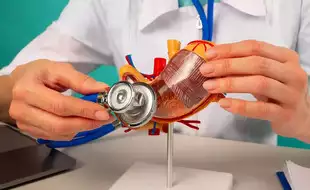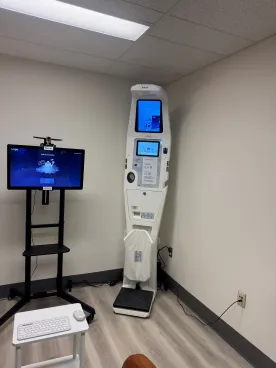News
‘Autonomous’ health-care: Quebec group turns to astronauts in new pilot
The West Island Regional Health Agency has launched a pilot project, opening an innovative Teleheath Station in a local community service centre (CLSC).

The project was inspired by medical initiatives used by the Canadian Space Agency.
“Patients on the waiting list can do a routine check up via a station that works for astronauts,” said Dan Gabay, the CEO of the CIUSSS de L’Ouest-de-I’ile-de-Montreal.
“Something that would be alarming would trigger the nurse to just see if everything is ok. If there is any area of concern the CLSC will intervene first. If a doctor needs to be seen, we connect you.”
The Telehealth Station is a small room equipped with a high-end Canada-health certified Connected Care Medical Module, or CCM2.
The Quebec and Alberta-based company Baune integrated and developed the technology. The Canadian Space Agency’s CCM2 initiative encourages the development of technologies that will help astronauts monitor their health while in space. Baune received a grant from the CSA to develop its technology.
Astronaut David Saint-Jacques was on hand for the launching of the pilot project on Monday. He said more individual and autonomous health monitoring is key for long-term space travel.
“With astronauts if something is really bad you can always come back home,” said Saint-Jacques, who spent six months in space.
“But if you want to go to the Moon, Mars, you will be beyond the point of no return. People will need to be really autonomous, to take care of themselves. Screening is the first step to make sure there are no red flags.”
At the Pierrefonds CLSC, the machine takes your weight, height, blood pressure, oxygen saturation level, as well as other medical markers.
They are similar basic health markers a nurse would take if a patient showed up in an emergency room. The results are read by a nurse, and if there is anything alarming that crops up, the nurse will forward the results to a doctor.
If a patient has these AI assessments done every six months or once a year, and something alarming such as a dramatic loss in weight, or a spike in blood pressure, is noticed, this could be an indicator something is amiss.
Medical experts hope it’ll revolutionize healthcare, and reduce long waiting lists for family doctors.
“I think it will give more capacity and give us more access and ensure the right patient is seen by the right professional at the right time,” said Gabay.
“This could ensure it puts you on top of the list. Right now the list is really first come, first serve. It’s not the right way to look at a list.”
The West Island has 20,000 people missing family doctors. The CLSC hopes the Telehealth station identifies those really in need of help.
With grants from the Canadian Space Agency, the company Baune helped develop the telehealth station.
“The whole system that was created for the Canadian space agency of astronauts can measure more than 40 health data points combined,” said Andrea Galindo, CEO and co-founder of Baune.
“It was done for astronauts but now we want to have that impact on people in Canada.”
The second phase of the pilot project could see more CCM2s in more CLCSs, as well as local pharmacies.
Our Recent News




